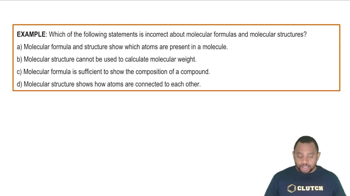The phase diagram for sulfur is shown here. The rhombic and monoclinic states are two solid states with different structures. b. Which of the two solid states of sulfur is more dense?
Explain the observed trend in the boiling points of these compounds.
H2Te -2 °C
H2Se -41.5 °C
H2S -60.7 °C
H2O 100 °C
 Verified step by step guidance
Verified step by step guidance
Verified Solution
Key Concepts
Intermolecular Forces

Hydrogen Bonding

Molecular Weight and Structure

Water is a good solvent for many substances. What is the molecular basis for this property, and why is it significant?
Explain the observed trend in the melting points of the hydrogen halides.
HI -50.8 °C
HBr -88.5 °C
HCl -114.8 °C
HF -83.1 °C
The vapor pressure of water at 25 °C is 23.76 torr. If 0.25 g of water is enclosed in a 1.50-L container, will any liquid be present? If so, what mass of liquid?
The vapor pressure of CCl3F at 300 K is 856 torr. If 3.5 g of CCl3F is enclosed in a 1.0-L container, will any liquid be present? If so, what mass of liquid?
A sample of steam with a mass of 0.552 g and at a temperature of 100 °C condenses into an insulated container holding 4.25 g of water at 5.0 °C. Assuming that no heat is lost to the surroundings, what is the final temperature of the mixture?
